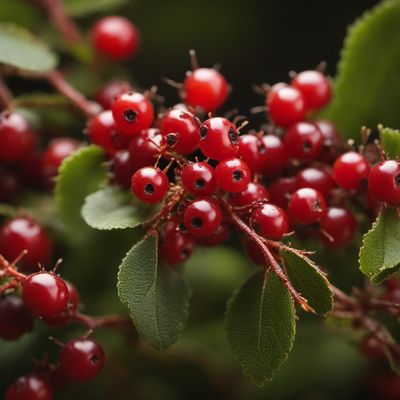
Ingredient
Black crowberries (common)
The Dark Gems of the Arctic
Black crowberries are small, round berries with a deep black color. They have a tart and slightly bitter flavor, similar to cranberries but with a more intense taste. The berries are juicy and have a soft texture, making them suitable for both sweet and savory dishes.
Origins and history
Black crowberries are native to the Arctic regions, including Alaska, Canada, and Greenland. They have been a staple in the diet of indigenous Arctic communities for centuries, providing a valuable source of nutrition in harsh environments. Today, black crowberries are still foraged and used in traditional Arctic cuisine.
Nutritional information
Black crowberries are low in calories and rich in antioxidants, vitamins, and minerals. They are particularly high in vitamin C and fiber, making them a nutritious addition to the diet. These berries also contain anthocyanins, which have been associated with various health benefits.
Allergens
May cause allergic reactions in individuals with berry allergies.
How to select
When selecting black crowberries, look for berries that are plump, firm, and uniformly colored. Avoid berries that are mushy, moldy, or have any signs of spoilage. It's best to choose berries that are in season for optimal freshness and flavor.
Storage recommendations
To keep black crowberries fresh, store them in the refrigerator in a breathable container, such as a paper bag or a perforated plastic bag. They can also be frozen for long-term storage. Before using, rinse the berries gently under cold water and remove any stems or leaves.
How to produce
Black crowberries can be found growing in the wild in Arctic regions. They thrive in cold climates and are often harvested by indigenous communities. However, they can also be cultivated in home gardens with the right conditions, such as acidic soil and cool temperatures.
Preparation tips
Black crowberries are commonly used in traditional Arctic cuisine. They are often made into jams, jellies, and sauces, which are used as accompaniments to meats or fish. These berries can also be used in baked goods, such as pies or muffins, to add a unique tartness.
Availability
Arctic regions, including Alaska, Canada, and Greenland.


